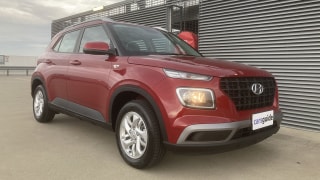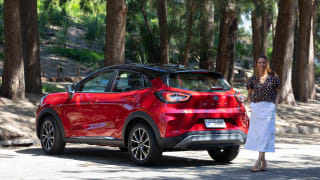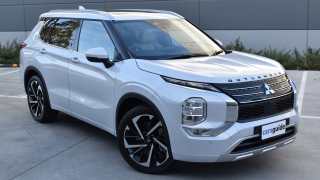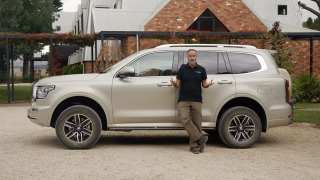Ok, so it's fair to say that it's a strange time to be running a long-term vehicle in Sydney. Road-trips are a distant memory, our very best driving roads are sitting lonely and empty of traffic, and the concept of a long-distance test has been shrunk to a 5km circle around our homes.
But there is another way to look at it, and that is that I've never depended on a vehicle quite so much as I have the Kia Stonic GT-Line.
When you can only go to the shops, getting their and back has been critically important, plus it's taken me to my vaccination appointments, piped the ritual 11am press conference through its in-cabin speakers, and – perhaps most important – been responsible for picking up more take-away pizzas, Thai food and bottles of wine than I had ever thought possible.
Short version? We might not be travelling far, but I find myself bonding with my little Kia like few cars before it. Plus, I managed to wrack up some kays before lockdown really set in.

But first, what the hell is it? Kia's smallest SUV, the Stonic stretches the very definition of SUV, with dimensions barely bigger than a city car. But what it lacks in size, it makes up for with a seriously stylish exterior design and a mostly well-equipped cabin, especially in this GT-Line trim level.
The Stonic measures 1520mm in hight and 1760mm in width, which makes its marginally taller and wider than the Rio hatchback, which is 1450mm high and 1725mm wide. So in SUV terms, the Stonic is no giant.
Unsurprisingly, it's front-wheel drive, and there is seating for five (though more likely four if you're transporting adults), and there is 352 litres (VDA) of space in its clever little boot.
Our car, the GT-Line, sits at the tippy top of the Stonic family, above the entry-level S and mid-spec Sport, and it's the only model in the family to make use of Kia's most-clever engine.

While the lesser grades get a 1.4-litre, four-cylinder petrol paired with a six-speed auto or six-speed manual, the GT-Line gets a clever 1.0-litre, three-cylinder turbo-petrol that not only makes more power (74kW and 172Nm versus 74kW and 133Nm), but also requires less fuel (5.4L/100km versus 6.0-6.7L/100km).
But... you do have to pay for it. The Stonic range kicks off with the S for $21,490 (manual) or $22,990 (auto), before stepping up to the Stonic Sport for $24,990 (manual) or $25,990 (auto). Our car, the GT-Line, is then a fairly sizeable jump to $29,990.

But for that, you do get a fair bit of stuff. There's the engine and gearbox, of course, as well as the range-wide 8.0-inch touchscreen with Apple CarPlay and Android Auto.
You also get the best of the Sport model's kit, including 17-inch alloys, a proximity key with push-button start, sat-nav, digital radio and a more upmarket-feeling cabin.
But springing for the GT-Line also unlocks some of its own features, some of which seriously improve the street appeal, like the GT bodykit, the LED lights, DRLs, and fog-lights, and the massive sunroof.
You also get a sportier-feeling steering wheel, better-feeling seats and on-board climate control, as well as three driving modes (Eco, Normal and Sport).

All of which is why the Stonic GT-Line does a pretty good impression of a premium vehicle for front-seat riders, even if some of the cabin materials (and especially on the door panels and centre console that divides the seats) are a harsh plastic that is unforgiving to the touch.
Still, there are two cupholders, which match the big bottle holder in each door, and connecting your device is easy and intuitive.
However, those in the less-than-massive rear pews make do with a more basic space, free of air-vents, cupholders and power outlets, and with just a single USB port to share.
That said, I reckon I’ve got a fair handle on the Stonic’s buyer. If yours is a bigger family, you’re no-doubt shopping further up the Kia tree. Same if you have lots of people or stuff to cart around regularly.

The Stonic, I reckon, is aimed pretty squarely at my wife and I: a city-dwelling couple with no kids, one dog, and a penchant for the kinds of adventures that rarely see us leaving tarmac roads.
And for us, the space has proved ample to date, with the not-massive boot still able to swallow all the shopping, picnic gear, tennis stuff and everything else we’ve thrown at it to date — save a trip to Bunnings in which the items were too long to fit in, even on an angle, so ended up thrown across the backseat instead.
So, the size is right (for us), and I do swoon a little when I catch a glimpse of its exterior styling, but that’s not to say there haven’t been a couple of queries to date.

The engine/gearbox combo is undoubtedly clever, and I love the way the three-pot sounds, but it hasn’t proven the smoothest combination I’ve driven so far, and there’s plenty of lag on set-off that you need to contend with, or at least get used to.
One other thing, and this is an annoyance rather than a problem, but the Stonic auto-locks every door once you start moving, which makes sense, but to unlock them you don’t just need to put the vehicle in park, but also kill the engine. Which means if you stop to pick someone up, or run into a shop to grab something to throw into the boot, you find yourself locked out and looking a bit of a dill.
Far from a deal-breaker, I know, but there you have it.
Still, our early weeks with the Stonic have been mostly sunshine-filled, and I haven’t grown tired of just looking at it yet.
But how will its little engine deal with daily grind of lockdown life? And will its fuel economy really live up to the promise? Tune in next time, friends. Same CarsGuide time. Same CarsGuide channel.
Acquired: July 2021
Distance travelled this month: 453km
Odometer: 2885km
Average fuel consumption for July: 8.8L/100




















